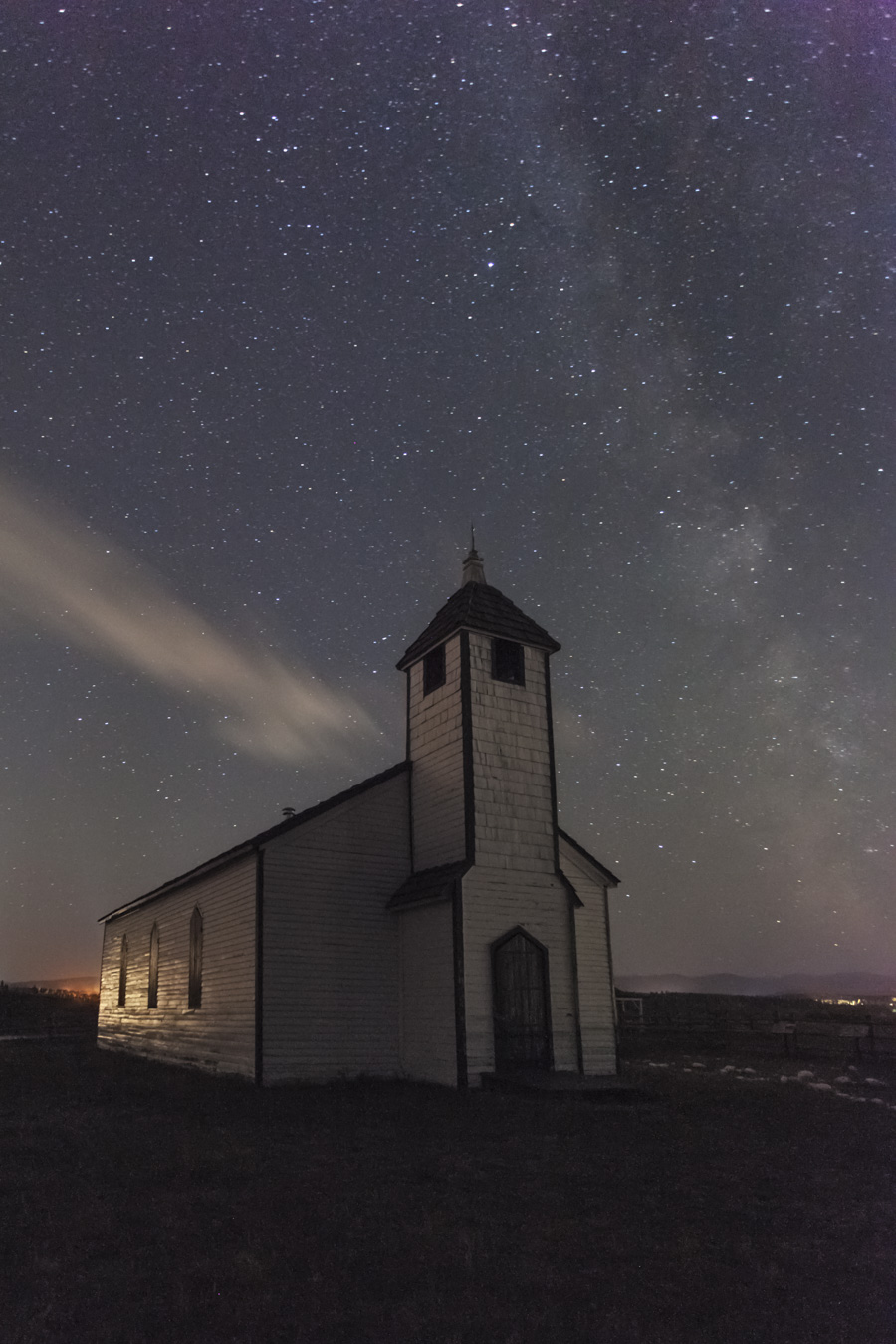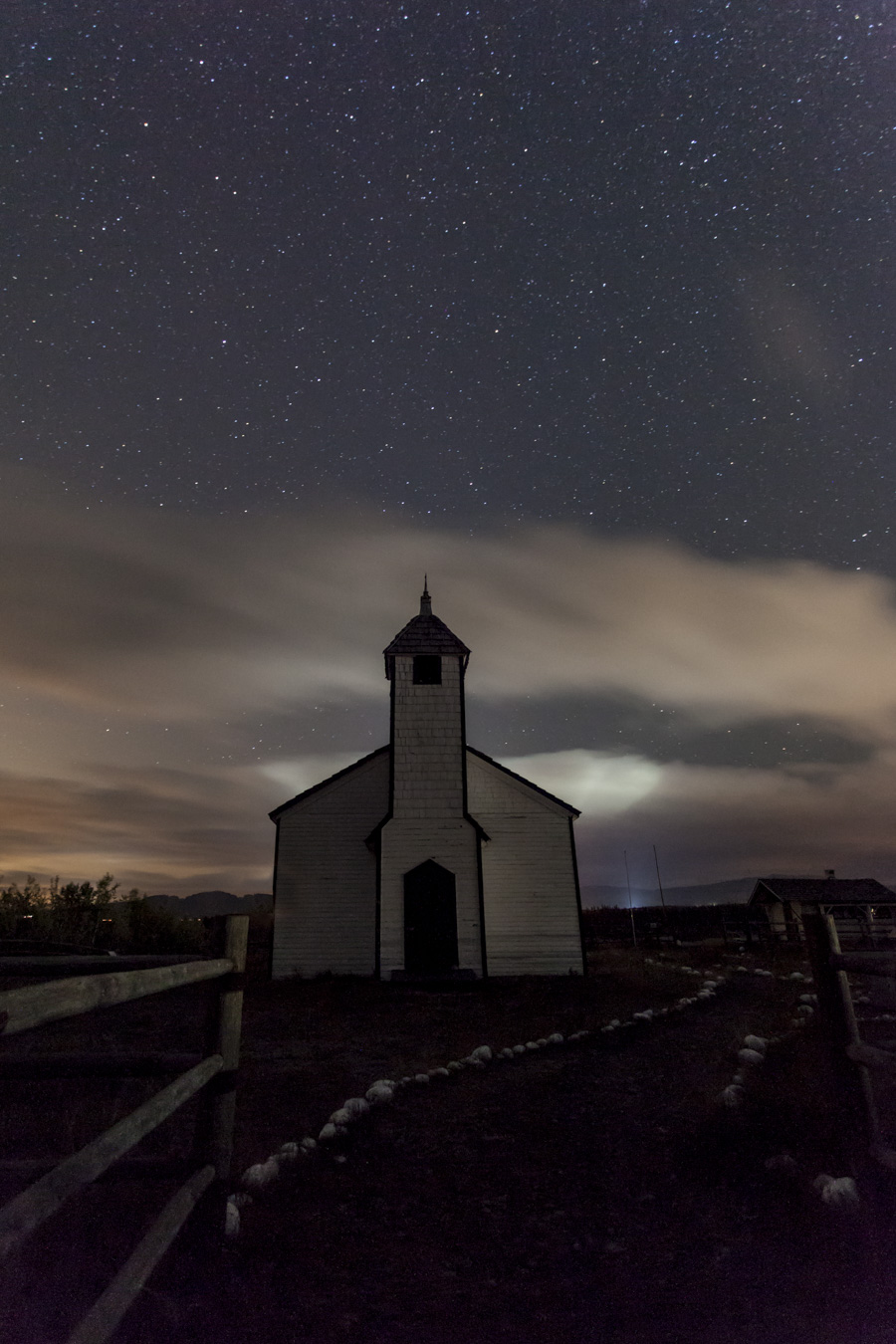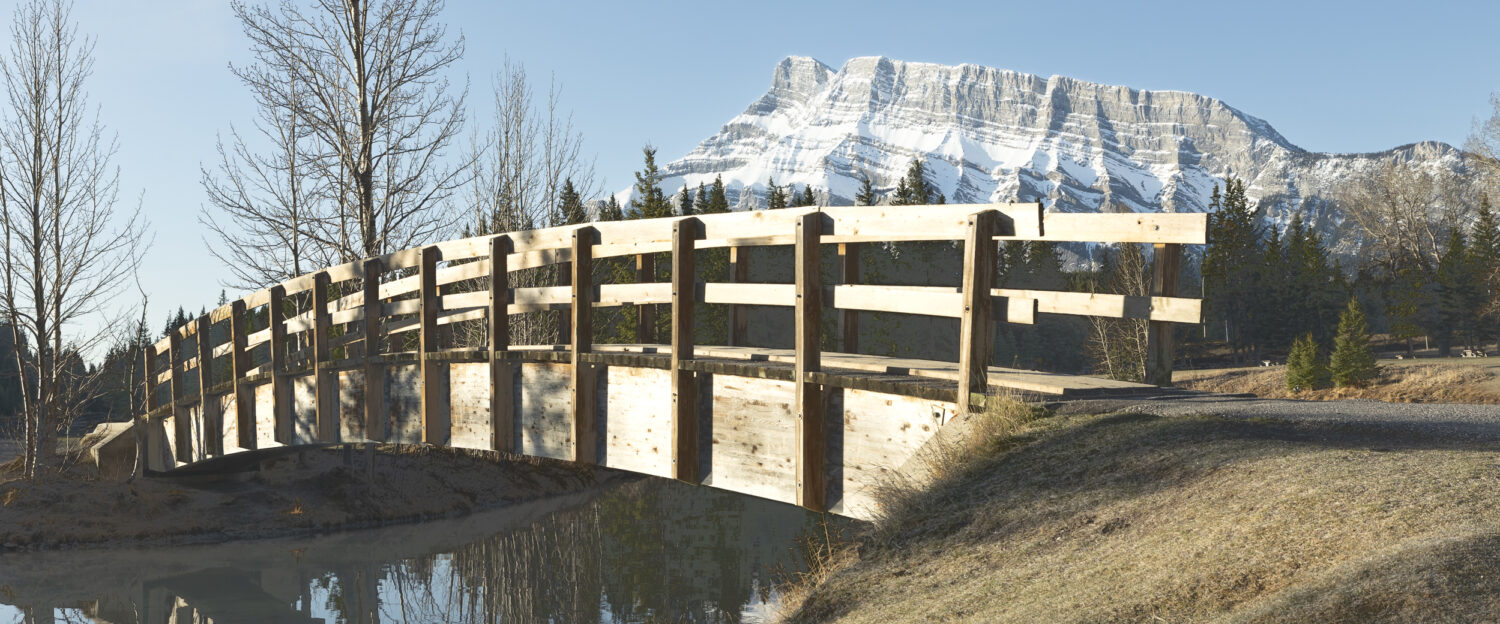Last Saturday evening, I ventured out with a fellow member of the Canmore Camera Club, Kevin McCormick for some night scenes. Our destination was an old church, near Morley, AB, a First Nations settlement within the Stoney Reserve. Our purpose was to photograph the church with the night sky as a background. We chose this evening for the absence of the moon and the relative darkness of a rural community (limited light pollution). It was also forecast to be clear, giving us clear view of the stars. And most importantly, the Milky Way.
In this first picture, you can see the Milky Way quite clearly to the right of the church. Some un-forecast cloud has crept in from the left but it looks good and doesn’t obscure anything important. I like the contribution it makes to the composition, a second diagonal line complementing the one created by the Milky Way.

The weather forecast wasn’t quite right and clouds continued to drift into the area. Not a problem in this case. We had gotten our pictures with the Milky Way and as it turned out, the clouds created a different scene that was quite pleasing. With a long exposure and a strong wind aloft, the clouds appear windblown and wispy. They also reflect the light from Morley but I’m not quite sure I like the bright patch in the centre. That appears to be a reflection from some spotlights below. It breaks the uniformity of the clouds’ tone but perhaps I could call it a halo emerging from behind the church. I like the glimpses of stars through and above the clouds and a little bit of the Milky Way is still visible on the right.

Night photography poses a few new challenges not encountered in daylight, particularly in a location this dark. It’s easy to plan how you’re going to capture the scene but it’s also easy to overlook how you’re going to operate in the dark. A flashlight is handy but a head lantern is better. It frees up the hands for taking the pictures. I’ve learned that a red bulb is the way to go; you can see well but your eyesight does not need to readjust to the darkness each time you turn it on. (Those guys in the darkrooms were onto something!). Autofocus doesn’t work in the dark and manual focusing can be impossible without illuminating the area upon which you’re trying to focus.
It was a great evening for photography. We called it a night around 11:00 PM and made it home easily before midnight.

How long were the exposures at what f-stop and film speed? Unless that is giving too much away! LOL
30 seconds @f4.0, ISO 3200 and focal length 17 mm
Absolutely terrific images, Peter. Nice composition, use of light, incorporation of the night sky into an image with a more terrestrial focus of interest.